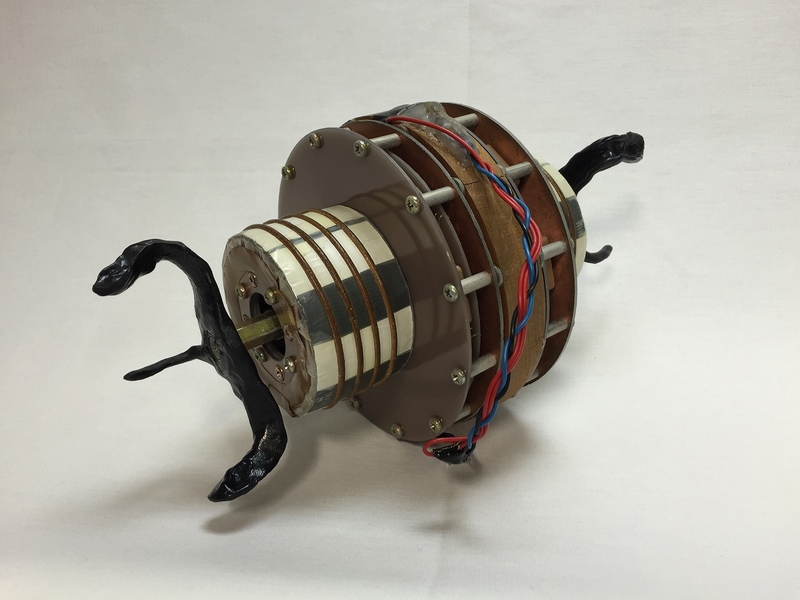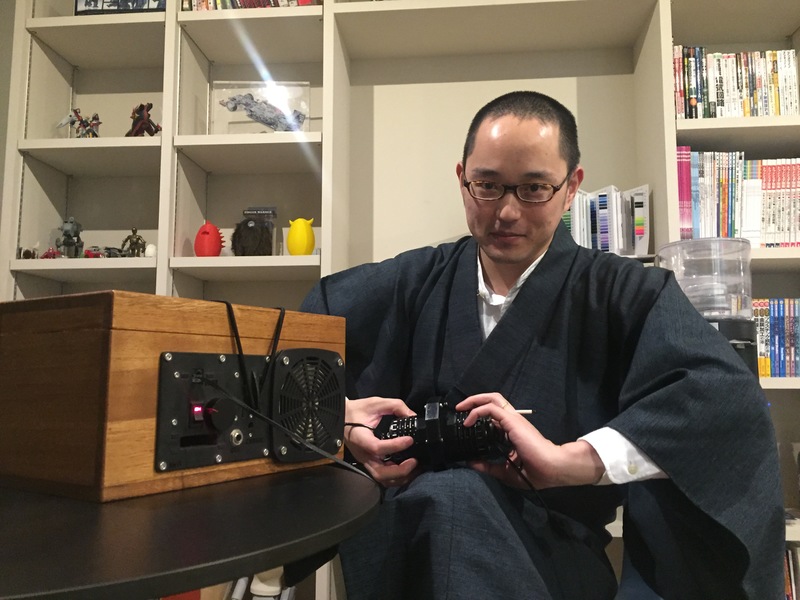Interviews

UDAR: A New Frontier in Electronic Instruments (Part 1)
Michinobu Uda
Michinobu Uda’s UDAR combines the legato sound of a violin with the chordal playstyle of a piano. In part 1, we ask him directly about UDAR’s development and conception.
Interviewer & Japanese Writer: Yamamoto Takaya; Translation & Editing: Matthew Cherry
Have you ever picked up an instrument with a renewed determination to become the next great virtuoso, only to quickly give up after realizing it’s too difficult? You are not alone. Michinobu Uda’s new electrical instrument UDAR may just be what you need to keep up your motivation to play.
UDAR is an electrical instrument that takes inspiration from the violin and the piano, featuring both legato pitch intervals and a chordal system. Cylinders wrapped with spiraling pressure sensors adorn each side of the UDAR’s main body. Pressing down on these sensors emits a musical tone, and pressure sensitivity allows for control of the relative volume. With the slide of a finger, the tone’s pitch will glide to create a smooth sound. One sensor ring represents a single octave, and with six different rings on each side of the device, using multiple fingers to create chords is seemingly effortless. UDAR truly is a new type of instrument, allowing anybody - even those without musical expertise - to easily and intuitively pick up and start performing.
Even Uda himself did not initially possess any musical background until his first year at university when he picked up the classical guitar. As with any new skill, the initial learning curve can be steep and intimidating. The cumbersome feeling Uda experienced while learning the guitar was UDAR’s genesis.
“Though I came to realize how fun playing an instrument can be, the most popular instruments around the world are much easier to learn and play if you have a sense of perfect pitch, which I think is a bit inefficient on a universal scale. For example, anyone can sing a song at karaoke as long as they’ve heard it before, even if they don’t have the relative pitch or know much about music. In a similar fashion, I thought it would be nice if there were an instrument that had the same intuitive, user-friendly playstyle.”
A single instrument that could play the melody, harmony, chords, and notes outside of the traditional musical scale. The quest to create such a never-before-seen device had begun.
“About two months after I first had the idea, I thought of an interface wrapped with one spiral representing one octave. The device I made at the time actually had buttons lined up to play the sounds. You couldn’t adjust the volume, and the pitch only moved up or down in half-tone intervals. It was still a far cry from my ideal vision of a fretless, chord-playing instrument.”

UDAR 1.0, created when Uda was still in university.
Although Uda was going for a degree in computer science, he continued his development of the UDAR and used it as a catalyst to expand his studies of topics outside of his department, namely electronic circuits and robotics.
The turning point in development was when Uda met Professor Makoto Shimojo (Emeritus Professor at The University of Electro-Communications), who was conducting research into pressure sensors in robotic hands. Using these pressure sensors, Uda’s envisioned instrument that could change volume and sound with a simple touch was looking to become more of a reality.
With the tracks laid out clearly in Uda’s mind, UDAR’s development was full steam ahead. Seeking a career that could benefit the development of UDAR, Uda began working at a semiconductor manufacturing company after graduating university. This period would only last a year and a half however, as it became evident that continuing to put the necessary work into UDAR’s development would be difficult to accomplish. That’s when Uda made the bold decision to become self-employed, and this new-found independence allowed him to dedicate more time on UDAR without impacting his career.
His decision immediately began to bear fruit, and thanks to this shift in lifestyle the UDAR 4.5 was born. After years of prototyping and developing, the UDAR 4.5 included most of the features and abilities that were originally planned from the start. The pitch could be changed smoothly, and using both sides of the cylinder allowed for harmony and melody to come together to create beautiful chords.
“Because the development process was drawn out so long, I think I became stuck in a rut. Tinkering and toying with it I couldn’t shake the feeling of dissatisfaction, and I even became a little confused about what to do next. Just when I was feeling lost, that’s when I came across the INNO-vation Program. I remember thinking if I could just be selected by the program, maybe I could further develop the UDAR into an even better version of itself, so I gave it a shot and applied.”
In part 2, we’ll learn more about UDAR’s development during the INNO-vation Program.

Uda, playing the UDAR developed during the INNO-vation Program.
Continued in Part 2 (Coming December 6th)
Michinobu Uda's Profile

